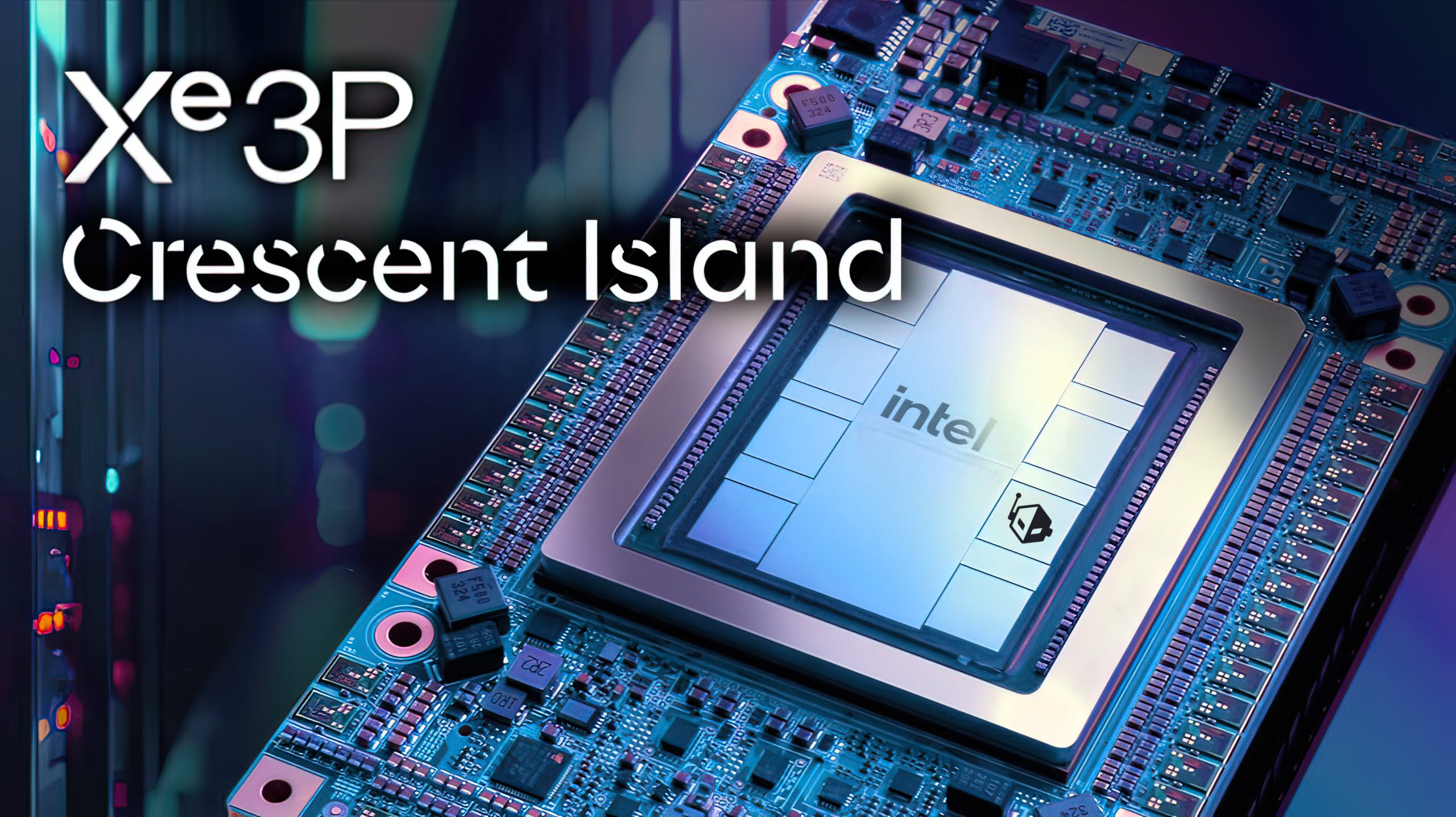Intel has announced its brand new AI inference GPU solution for data centers, codenamed Crescent Island, which features the Xe3P architecture.
Xe3P Graphics Architecture Powers Blue Team’s Next-Gen Workstation AI Inference GPU, Crescent Island: Arriving In 2H 2026
After falling short of its AI-centric goals on the data center front, Intel is now revising its strategy a bit. The company seems to be going the efficiency and higher memory capacity route with a brand new offering that we have never heard of before, and it’s called Crescent Island. This is the same GPU that was teased at the Intel Tech Tour 2025.
The Intel Crescent Island GPU is based on the brand-new Xe3P architecture, which is the same graphics architecture that was teased by the company last week during its Panther Lake and Xe3 deep dives. The new architecture will be a further upgrade over the Xe3 architecture, and for clients, the architecture will be featured on a next-gen Arc family, the Arc C-Series. But Xe3P is going to be even more scalable, from client iGPUs to data center AI GPUs.
The new data center GPU code-named Crescent Island is being designed to be power and cost-optimized for air-cooled enterprise servers and to incorporate large amounts of memory capacity and bandwidth, optimized for inference workflows. Key features include:
- Xe3P microarchitecture with optimized performance-per-watt
- 160GB of LPDDR5X memory
- Support for a broad range of data types, ideal for “tokens-as-a-service” providers and
inference use casesIntel’s open and unified software stack for heterogeneous AI systems is currently being developed and tested on Arc Pro B-Series GPUs to enable early optimizations and iterations. Customer sampling of the new data center GPU code-named Crescent Island is expected in the second half of 2026.
via Intel
Intel Crescent Island will be both power- and cost-optimized. It will be targeted at air-cooled data center solutions and will be aimed at AI inference workloads. According to Intel, the Xe3P graphics architecture used for Crescent Island will be optimized for performance per watt. The card itself will feature a massive 160 GB memory capacity based on the LPDDR5X standard. Interestingly, Intel is going with LP5X.
Competitors such as NVIDIA and AMD are offering their data center AI solutions with top-grade HBM memory, such as HBM3E, and already talking about HBM4 for next-gen parts such as Rubin and MI400. But at the same time, sourcing HBM has become difficult due to increased demand, and that has also led to higher prices.
Leveraging LPDDR5X memory can give Intel a big edge in the cost/performance segment. Furthermore, the architecture will support a broad range of data types that are ideal for “Tokens-as-a-service” providers and inference use cases.
Intel is already evaluating its open and unified software stack for heterogeneous AI systems with its existing Arc Pro B-series lineup, so future iterations will be able to access these optimizations early on. Intel is currently targeting customer sampling for its Crescent Island GPU for the 2H of 2026, so we’ll definitely learn more about the GPU in the coming months.
Follow Wccftech on Google or add us as a preferred source, to get our news coverage and reviews in your feeds.
First Appeared on
Source link













